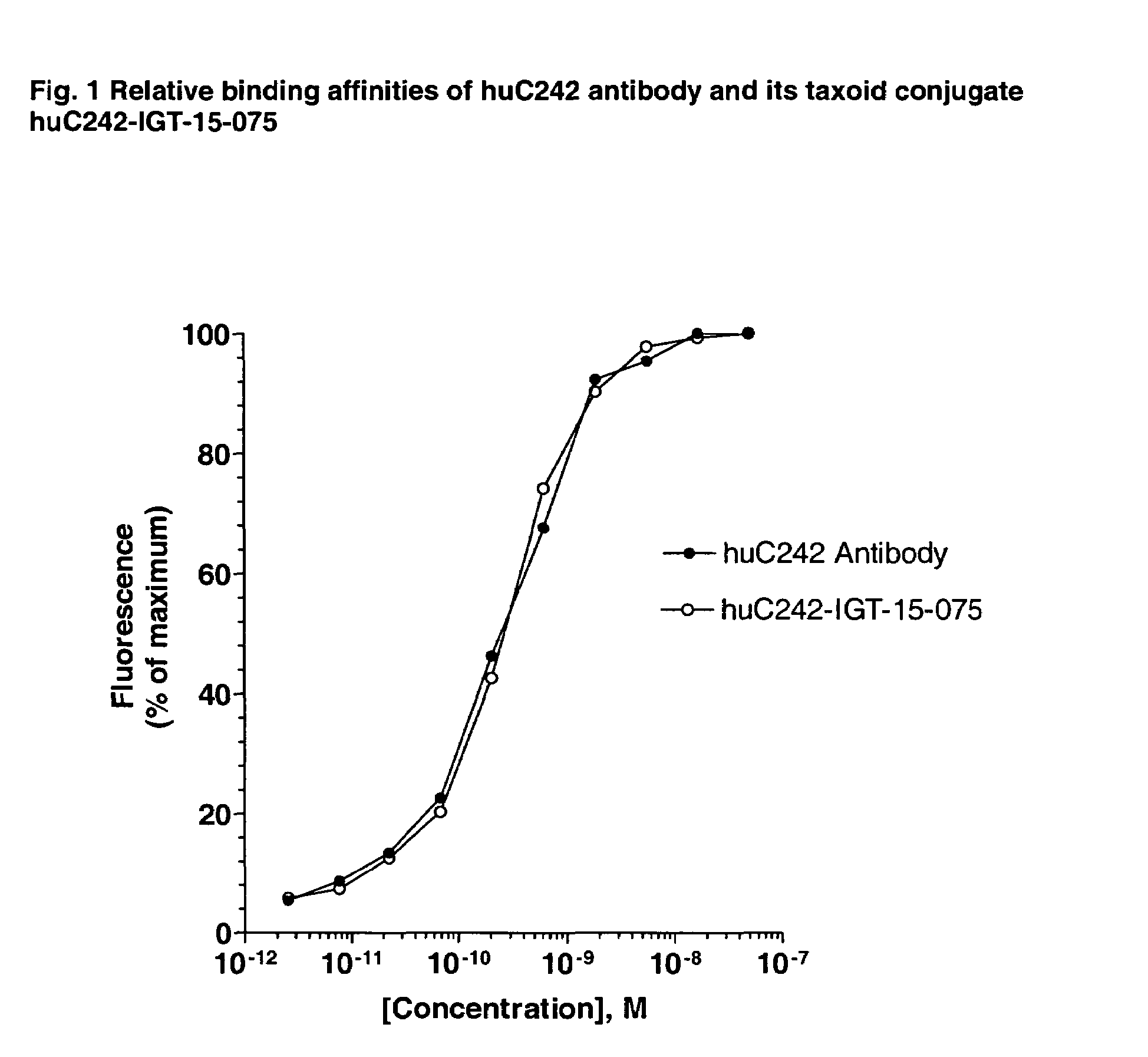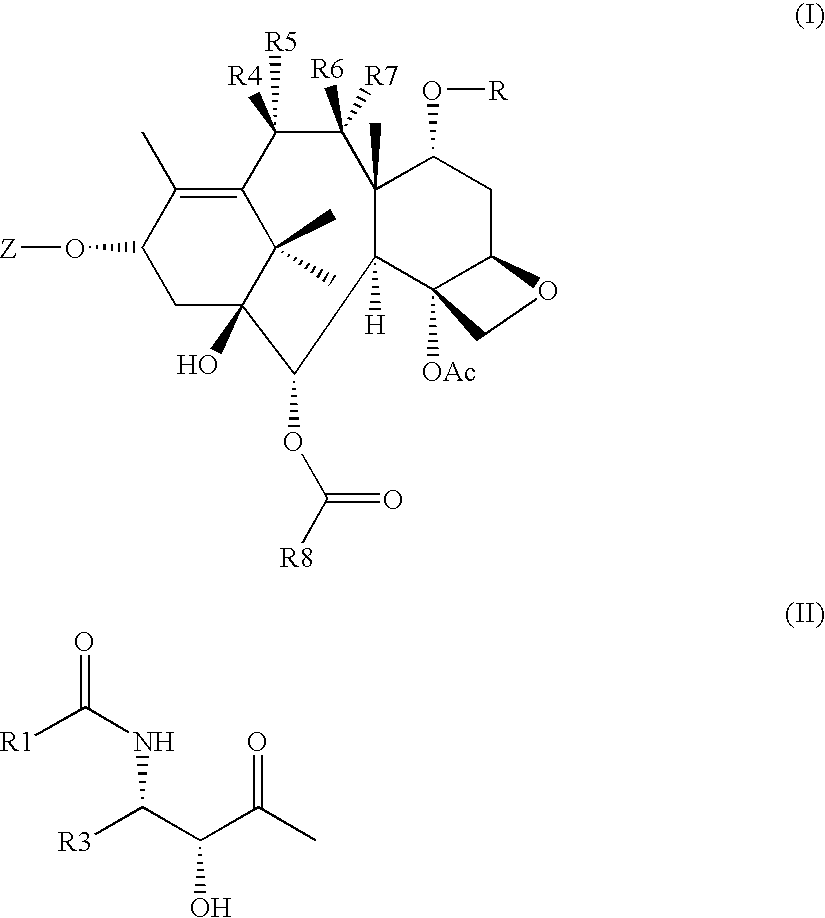Cytotoxic agents comprising new taxanes
a cytotoxic agent and taxanoid technology, applied in the field of new cytotoxic agents, can solve the problems of ineffective mechanism by which drug molecules are released from antibodies, difficult chemical modification of existing drugs, and difficult to reduce the cytotoxic potential of existing drugs, etc., and achieve the effect of effective us
- Summary
- Abstract
- Description
- Claims
- Application Information
AI Technical Summary
Benefits of technology
Problems solved by technology
Method used
Image
Examples
examples
Synthesis of IGT-1 5-075-SH for Conjugation
[0194]
7α,9α-epoxy-3′-dephenyl-3′-(2-furyl)-2-debenzoyl-2-(2,5-dimethoxybenzoyl)-10-(N-2,2-dimethyl-2-sulfhydryl-ethylcarbamoyl)-docetaxel (IGT-15-075-SH)
[0195]In a small vial dissolved 7α,9α-epoxy-3′-dephenyl-3′-(2-furyl)-2-debenzoyl-2-(2,5-dimethoxybenzoyl)-10-(N-2,2-dimethyl-2-methyidithio-ethylcarbamoyl)-docetaxel (36 mg, 0.0353 mmol) in a mixture of methanol (1.0 mL) and ethyl acetate (0.73 mL). In a separate vial dissolved DTT (55 mg, 0.343 mmol) in 50 mM KP buffer pH 7.5 (0.73 mL) which was then added to the taxoid solution. The reaction was monitored by hplc until it was found to be complete (˜19 hr). The reaction was quenched with 50 mM KP buffer pH 6.5 (6 mL) and extracted with ethyl acetate (3×20 mL). The combined organic layers were washed with water, dried over anhydrous sodium sulfate, and concentrated. The residue was purified by hplc using a diol column to give the desired product (27 mg, 79%) which was immediately aliquoted ...
PUM
| Property | Measurement | Unit |
|---|---|---|
| concentration | aaaaa | aaaaa |
| pH | aaaaa | aaaaa |
| pH | aaaaa | aaaaa |
Abstract
Description
Claims
Application Information
 Login to View More
Login to View More - R&D
- Intellectual Property
- Life Sciences
- Materials
- Tech Scout
- Unparalleled Data Quality
- Higher Quality Content
- 60% Fewer Hallucinations
Browse by: Latest US Patents, China's latest patents, Technical Efficacy Thesaurus, Application Domain, Technology Topic, Popular Technical Reports.
© 2025 PatSnap. All rights reserved.Legal|Privacy policy|Modern Slavery Act Transparency Statement|Sitemap|About US| Contact US: help@patsnap.com



